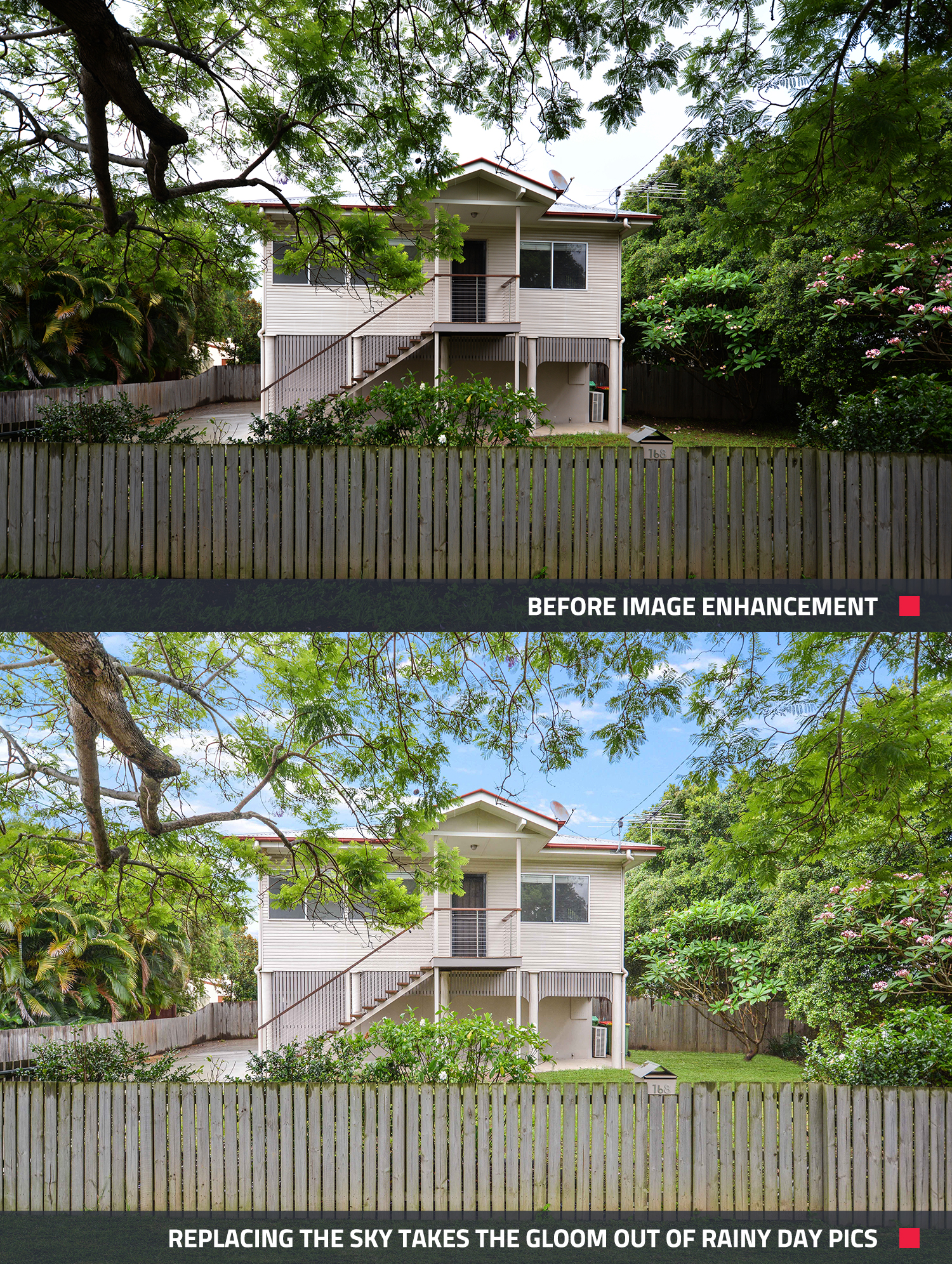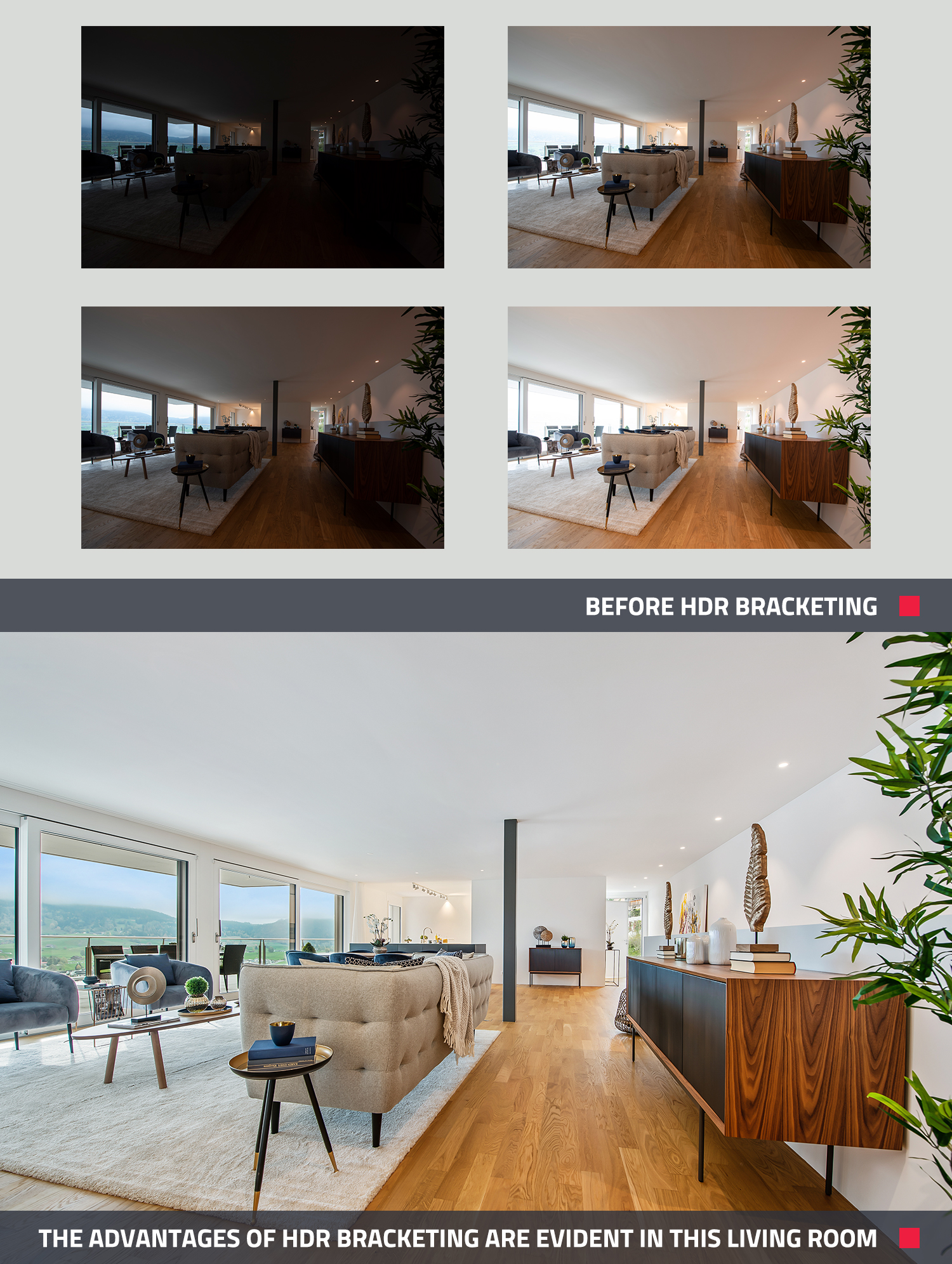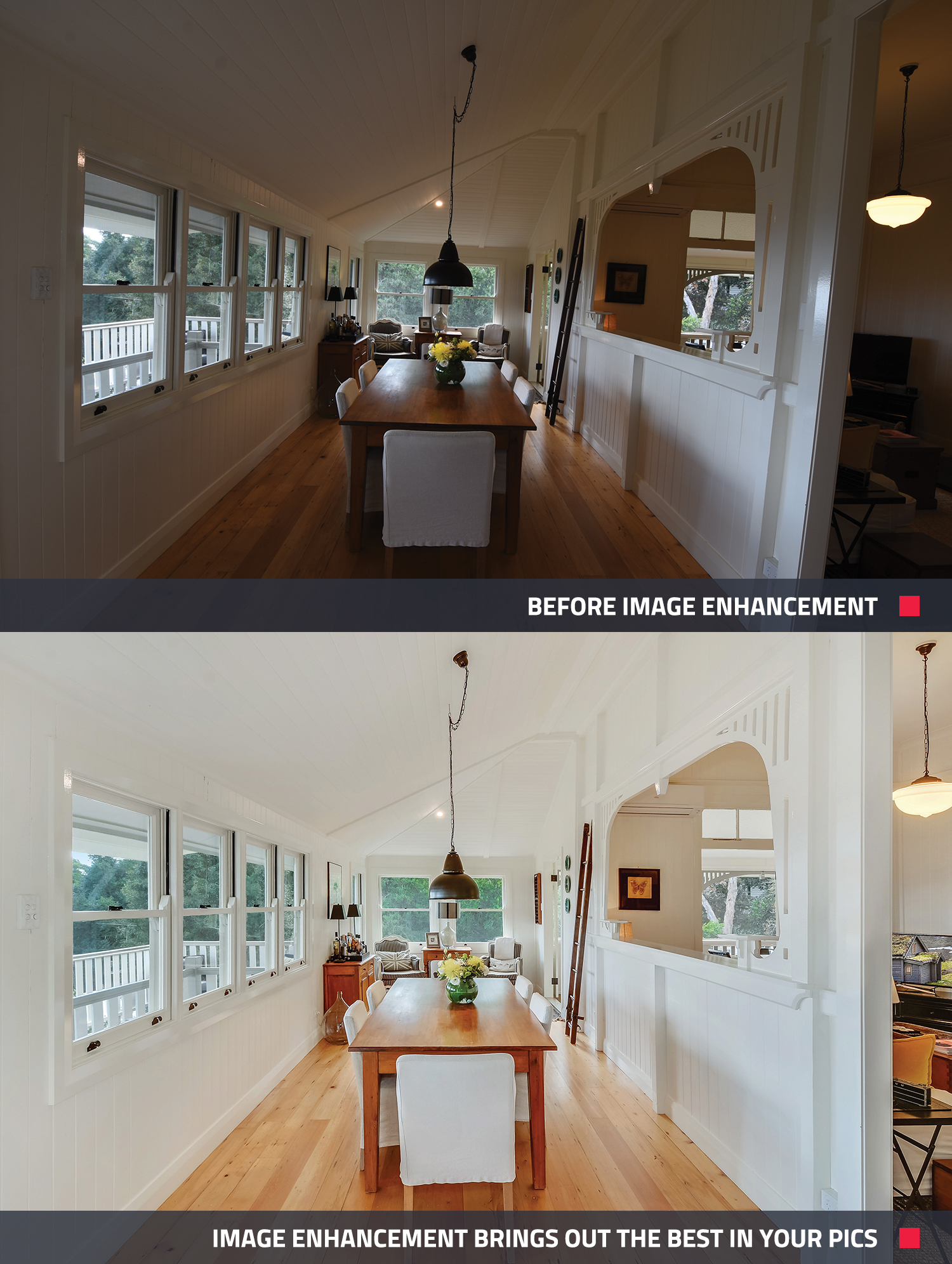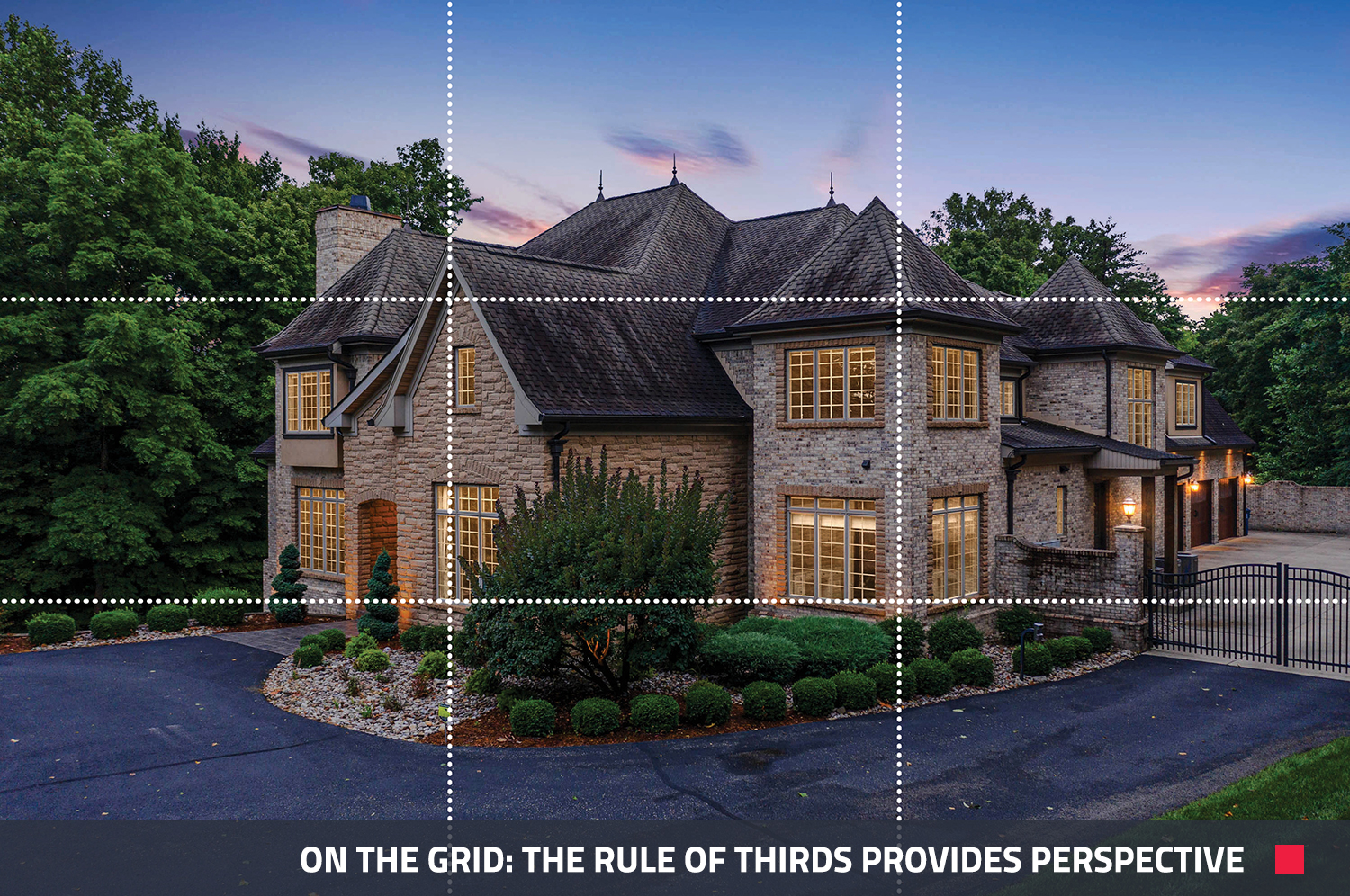BEST PRACTICES IN REAL ESTATE PHOTOGRAPHY: WHAT ARE THEY?
BoxBrownie.com have recently completed one of the most comprehensive real estate marketing studies since the internet was invented, and, truth be told, the results have caught us a bit off-guard.
The purpose of the study was to fill a hole and come up with some hard numbers on the quality of real estate photography on MLS sites in the USA.
From March 2021 to June 2021 we analyzed more than 25,000 listings on realtor.com and Zillow. This is about half of the listings that appeared on these sites during this timeframe.
As Inman.com put it, the study revealed that “[t]he vast majority of real estate listings are not giving consumers what they want when it comes to visual marketing”.
We assessed the quality of each listing for three criteria:
- Did the listing include a virtual tour?
- Did the listing include a floor plan?
- Did the photos use best practices in professional photography?
The study found that 94% of listings do not include a virtual tour.
Only 16% of the listings included a floor plan.
Fewer than 30% of listings used best practices in professional photography.
In this post, we’ll take a deeper dive into the concept of “best practices in professional real estate photography”. For the full meaning of our study to be grasped, some further definitions on this point should be helpful.
BEST PRACTICES OF REAL ESTATE PHOTOGRAPHY
What are the best practices in great real estate photography?
Professional photographers define the best real estate photography as the sum of three main parts:
- the preparation of the property for a photo shoot
- the shoot, angles, equipment, and technique involved with a shoot
- the editing of the images to return them to what the eye sees when it gets to the property (and other forms of editing, like replacing the sky, if the shoot took place on a rainy day)
Our study of the listings portals was unable to assess the preparation that went into each shoot. Real estate agents and photographers who wish to know more about best preparation practices will be well-served to read, or even download our Pre-Photography Checklist for real estate photography tips.
 REPLACING THE SKY TAKES THE GLOOM OUT OF RAINY DAY PICS
REPLACING THE SKY TAKES THE GLOOM OUT OF RAINY DAY PICS
For this study, we looked at four specific photographic techniques. If you’re an agent or a real estate photographer hoping to become a leader in visual marketing, your listing photographs should exhibit the following:
- HDR (High Dynamic Range) Bracketing
- The Flambient Method
- The Rule of Thirds
- Exposure triangles
HDR BRACKETING
As our own Peter Schravemade told Inman.com: “There is only one globally-recognized technique of photographing a property in order to best represent it for sale to potential buyers. It is a bracketing/HDR method. This method can be combined with other shooting techniques, (flambient, rule of thirds, exposure triangles etc…), but the common denominator is bracketed shooting.”
The result of bracketing is that you can see out the windows of an interior photograph, as it would appear if you were standing in the room in real life.
 THE ADVANTAGES OF HDR BRACKETING ARE EVIDENT HERE IN THIS LIVING ROOM
THE ADVANTAGES OF HDR BRACKETING ARE EVIDENT HERE IN THIS LIVING ROOM
Any decent DSLR camera is well-equipped to make bracketing a breeze. But the photographer must use the following bracketing method at the time of the shooting because it is very difficult to achieve in post-production.
Fortunately, it is very easy.
All that is required are 5 stills of the same photo shot at different exposures, ideally using a tripod. Your first still will be the darkest and the last will be the lightest.
One of the main things bracketing says about you as a realtor or real estate photographer is that you haven’t just walked through a property with a smartphone, snapping pics.
The cameras on most smartphones lack the settings to capture the series of five photographs at different exposures required to produce the effect of bracketing.
A full Bracketing Tutorial is available HERE.
THE FLAMBIENT METHOD
The “flambient” method for shooting real estate images is more than just a cool hybrid of a word. The term refers to the photographic technique that combines both flash and ambient light in a shot.
It’s one of the fastest-growing methods for shooting real estate pictures, because, as with bracketing, it's a great way to present the way a room looks and feels in real life.
Ambient light generally refers to any form of illumination that the photographer does not add to their image. It can be natural light from the sun or even the moon. But it also refers to manmade forms of lighting that are already present.
The flambient method seeks to transcend the limitations that come with shooting strictly flash or strictly ambient photography.
Shooting purely flash photography often comes with its own problems like flash bounce or shadows pointing bizarrely towards the windows.
Shooting purely ambient photography takes a lot of control out of the photographer's hands. It can make a shoot much more dependent upon time of day, and in houses that lack good natural lighting,The untrained photographer tends it can leave a rather gloomy result.
Flambient technique uses the strengths of each method to offset the weakness of each.
 EXPOSURE TRIANGLES
EXPOSURE TRIANGLES
The exposure triangle is a photography principle that determines the amount of light that reaches your camera sensor. To beginners, this principle can get a little confusing.
There are three components to the exposure triangle: shutter speed, aperture, and ISO. Essentially these three elements work together to produce a photograph that is properly exposed.
Exposure triangles are a complex beast, to be sure. Unlike with HDR bracketing, mastery of the fine balance required between ISO, shutter speed and aperture requires experience, advanced familiarity with camera settings and education that goes far beyond the scope of this post.
This is part of the reason why our image enhancement package is so useful to realtors and real estate photographers. Even if you are yet to master the knack for the Exposure Triangle, the photos of your listings don’t have to show it. Our masters of post-production can do a lot for you here.
For a couple of bucks per image, our Image Enhancement package brings your listings pics as close as possible to all of the above mentioned Best Practices of Real Estate Photography.
Given that fewer than 30% of studied listings in the US market have met this standard, using this service is a smart, inexpensive and headache-free hack to make your marketing stand out from the crowd.
Many professional photographers use it, even though they are more than capable of operating their DSLRs to achieve perfectly ratioed Exposure Triangles. Why? Because it can be a bit of a fiddle; wisely, they elect to leave the fiddling to us.
 RULE of THIRDS
RULE of THIRDS
While the other criteria in the Best Practices of Real Estate Photography have more to do with lighting, the Rule of Thirds is based on the aesthetics of perspective.
The “rule” is a basic guideline for making compositions more dynamic and dramatic. Most DSLR cameras allow you to superimpose the nine-square, 3 x 3 grid that provides the framework for the Rule of Thirds.
According to this widely accepted theory, the human eye is drawn to the points where the grid lines intersect.
There are exceptions of course, but a good rule to follow is to place the aspects of the property that you are trying to highlight in the crosshairs of these alluring junctures. Then push the button!
The tendency of the untrained photographer is to place the point of emphasis directly in the center of the frame. But the Rule of Thirds flies against this assumption.
“The results have been very enlightening and unexpected, with less than 30 per cent using best practices in professional photography is surprising, and flies in the face of what we are led to believe,” said Schravemade.
“It is important to us here at BoxBrownie.com that we make it easy for agents to enhance their listings.”
It may be a seller’s market but, that is never a good reason to cut corners. In a previous post, we talk about why it’s important to keep your branding strong during these busy times.